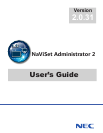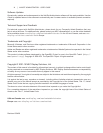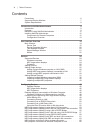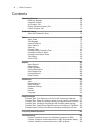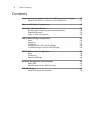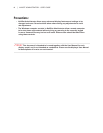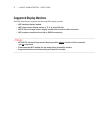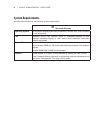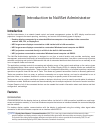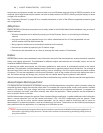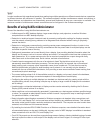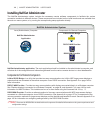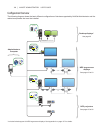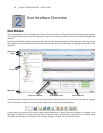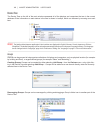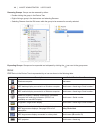
9 | NAVISET ADMINISTRATOR 2 USER’S GUIDE
Chapter
1
Introduction to NaViSet Administrator
Introduction
NaViSet Administrator is a network based control and asset management system for NEC display monitors and
projectors. It supports the asset reporting, monitoring, and control of the following types of displays:
• Desktop displays connected to a networked Windows computer via a standard video connection
such as VGA, DVI, or DisplayPort.
• NEC large-screen displays connected to a LAN via the built in LAN connection.
• NEC large-screen displays connected to a networked Windows based computer via RS232.
• NEC projectors connected directly to a LAN via the built in LAN connection.
• NEC projectors connected to a networked Windows based computer via RS232.
The NaViSet Administrator application is designed to run from a central location and provides monitoring, asset
management, and control functionality of remote displays and Windows computers. It can be run continuously to provide
automatic monitoring and control of devices with the use of automated tasks and alerts that can be run manually or set
to run at specic times and intervals.
The application provides controls for accessing and adjusting many of the controls and settings on the various types
of supported displays. Most controls available via the On Screen Display (OSD) of a display monitor are available via
the NaViSet Administrator application. These controls can be adjusted interactively, or be made to perform customized
operations at specic times via the use of Tasks. This allows very powerful automation function to be easily performed.
Tasks are operations that can query or perform commands one or more devices, and can be scheduled to run at
particular times, or on demand, and also to continue running for a specic period of time and interval.
Tasks can be used to perform conditional queries on devices, which can in turn be used to provide alerts for abnormal
conditions or events. Notication emails can be automatically sent to multiple recipients in the event of an alert condition.
Custom Reports of all of the connected devices can be created that contain information about each device and their
conguration, and settings.
Features
Communications
Communications with the display devices is achieved either via the built in LAN connection (available on most large-
screen and projector models), or via a host Windows computer that acts as an interface between the connected displays
and the network.
For desktop display models, communications with the display is performed using the existing video signal cable
connection to the host Windows computer via an interface called DDC/CI.
ⓘInfo: Display Data Channel - Command Interface (DDC/CI) is a two-way communications link between the video
graphics adapter and display monitor using the standard video signal cable. No extra cables are necessary. Special support
is required in the video graphics adapter hardware and video driver in order to provide this functionality. DDC/CI is an
industry standard developed by VESA (Video Electronics Standards Association).



